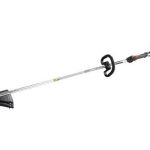Spring is finally here. So, no matter in what region of the United States you live, if you own a home with a yard it is time to dust off the lawnmower.
The chore of grass cutting is not one that most people relish. As spring turns to summer temperatures rise making it uncomfortable. Those who are usually assigned the task of grass cutting would rather cool off inside the house drinking lemonade and watching baseball. Still, it’s one of those jobs that have to be done.
Experience has taught some mowers grass cutting tricks they can use to shorten the time of doing the work and preventing some post mowing tasks from being necessary. Here are some ideas to assist in making the chore of cutting the grass a little more tolerable.
The One-Third Rule
One way you can reduce the time it takes to mow the lawn is to do it consistently. Procrastinating the inevitable can result in more work over time. Experts in grass cutting, who are known as lawn care professionals, employ what is called the one-third rule. To execute the one-third rule you need to determine how high you want your grass to grow, then remove only one-third of the grass height at a time. For example, if you determine that your grass should not exceed 2-inches, then mow it when it grows to 3-inches and take off just the top 1-inch. This method keeps your lawn looking neat and helps keep the grass clippings small so there is no need to rake up clumps of grass. Moreover, mowing shorter grass enables you to use less strength and energy than it would take if the grass were higher.
Plan to Prevent Post-Mowing Clean Up
Do you find yourself having to sweep the driveway and sidewalk of clippings after you have mowed your lawn? Prevent the need for this by keeping flower beds, the driveway and sidewalk on the opposite side of the clipping discharger of the mower. It’s okay for grass clippings to go on the lawn. When they decay they fertilize the soil.
Follow a Routine
It’s probably easier to follow a routine as you cut the grass. For example, leave the box that catches clippings off the mower if the mower’s instructions permit and weeds and weed grasses are not seeding. This helps in a number of ways.
· It helps conserve moisture in the summer months.
· Permits the lightly feeding of the lawn in the growing season.
· For one or two cuts after applying liquid feed, seaweed or iron products.
Other things you can do while mowing include:
· Use a Magic Marker to mark an “overlap marker” on the mower and use it to guide your path to slightly overlapping the previous run.
· Start mowing a straight line down the middle of the lawn and then mow on either side of it to assure straight stripes on your lawn.
· Finish the mowing by cutting all around the perimeter of the lawn once or twice to add a frame to the lawn
· If you have a four-wheel mower, overlap each run so the wheels do not go in the same place all the time. Repeated grass cutting in the same track will produce ruts or tram lines.
· Slow down you mowing speed if the grass is damp or long.
· If you are “scalping” the high spots of the lawn, raise the mowing height.
· Mow slopes and shady areas one setting higher than the rest of the lawn.
· If the lawn has a “silver sheen” or a “frayed” appearance after mowing the mower’s blade needs sharpening.
· If you use a cylinder mower and the blade stutters or produces a ribbed or rippled effect in the lawn than the mower is underpowered or the grass is too long or too wet. Slow down you mowing speed and mow more frequently.
· Mow one strip of grass and then switch directions with the mower so that the next strip sprays clippings over the area you just mowed if your mower features a side-discharger. Mowing in strips is better than mowing in a circle because you avoid creating mounds of clippings that have to be raked and can clog up the mower and dull its blade.
Finally, it is best to mow during the coolest part of the day or when the lawn is covered in shade. The act of cutting the grass creates tremendous stress on the grass plants. When you mow during the hottest time of the day, individual grass plants lose more water and recover much more slowly than they would if you mow during the cooler part of the day. Remember too that the shady portions of your lawn profit from a higher mowing height. Long grass blades have greater surface area for conducting photosynthesis. This is essential for achieving healthy grass that grows in the shade.







